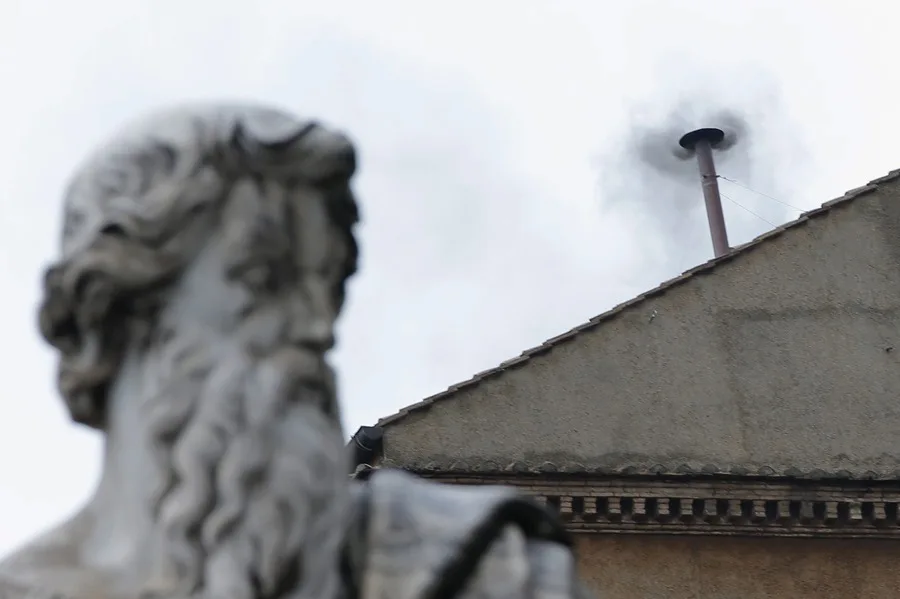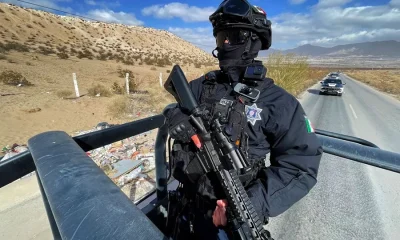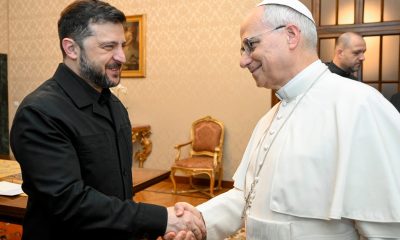International
A very heterogeneous and divided conclave will elect the new pope

Despite having been elected mostly by Pope Francis, who died this Monday at the age of 88, the 135 cardinals from 71 countries who will form the conclave that will elect their successor are a heterogeneous group that is not known and without a common idea about the future of the Church, which will make them present themselves in the Sistine Chapel strongly divided.
There are many differences with respect to the conclave that met twelve years ago to elect Jorge Bergoglio: one is the number of cardinal electors, that is, those who are under 80 years old on the day of the pope’s resignation or death, which is much greater than on other occasions, and another, the largest number of countries from which they come.
“Yes, I think that the fact that the 135 voters come from 71 countries could have weight in the conclave, since a candidate needs two-thirds of the votes to be elected. In 2013, that meant 77 votes. In the next conclave, based on the current number of voters, it would be 91. To date, 68 voters come from Europe and North America,” analyzes Irish journalist Gerard O’Connell in his book “The election of Pope Francis: an intimate account of the conclave that changed history.”
In addition, “the fact that many of the cardinals do not know each other so well, except those who participated in the synod, could create some difficulties, so they will depend more on the ‘makers of kings’, who are esteemed and influential cardinals, many of them over 80 years old,” says the also correspondent in Rome of the magazine of the Society of Jesus, America Magazine.
For the analyst of the newspaper ‘Corriere della Sera’ Massimo Franco and author of several books on the Vatican, the conclave that chose Bergoglio “was born with a strong anti-Italian prejudice, because it was a conclave following the resignation of Benedict XVI and if then the unwritten slogan was no to an Italian pope, this time it will be no to a South American pope, perhaps he will probably become a European.”
Franco assures that “the conservative minority are the ones who have expressed themselves the most, but in reality there is a wide and silent gray area that he has obeyed out of loyalty, although in reality he has disapproved of many of Pope Francis’ behaviors.”
“They come from 71 nations and this is a problem because they are cardinals who do not know each other, who come from peripheral realities not only from a geographical point of view, but also from a demographic and religious point of view,” adds the journalist of the Milanese newspaper.
For Franco, the curial model has failed and also the model of Casa Santa Marta (formed by the pope and his small group of collaborators), so “there will be a discontinuity”.
While Massimo Faggioli, professor of the history of Christianity at the University of Villanova (USA), assures that with respect to 2013, “today there is no factor of a candidate already examined in the previous conclave.”
“Similar to that of 2005 is the situation of division in the Church before the decisions of the pope, which however during the pontificate of Francis emerged harshly also on the part of cardinals and bishops, in a different way than Benedict XVI,” he says.
He emphasizes that “an essential difference is the international situation, much more complicated and dangerous than in 2013, especially because of what is happening in the US and consequently in the world.”
“There are several cardinals who have been very critical of Francis on certain issues, but have lost influence and voice in recent years. They have been cautious, but in the conclave they could find support among those who are surprised and tired of a pontificate with so much novelty and turbulence,” he emphasizes.
However, O’Donnel believes that “that most substantially share their vision and are committed to synodality.
After talking to many cardinals created by Francis, voters are more likely to vote for a candidate who substantially shares his vision.”
International
U.S. and Mexico Reach Deal to Address Water Deficit Under 1944 Treaty

The United States and Mexico have reached an agreement to comply with current water obligations affecting U.S. farmers and ranchers and for Mexico to cover its water deficit to Texas under the 1944 Water Treaty, the U.S. Department of Agriculture said in a statement.
The department уточified that the agreement applies to both the current cycle and the water deficit from the previous cycle.
On Monday, U.S. President Donald Trump accused Mexico of failing to comply with the water-sharing treaty between the two countries, which requires the United States to deliver 1.85 billion cubic meters of water from the Colorado River, while Mexico must supply 432 million cubic meters from the Rio Grande.
Mexico is behind on its commitments. According to Washington, the country has accumulated a deficit of more than one billion cubic meters of water over the past five years.
“This violation is severely harming our beautiful crops and our livestock in Texas,” Trump wrote on Monday.
The Department of Agriculture said on Friday that Mexico had agreed to supply 250 million cubic meters of water starting next week and to work toward closing the shortfall.
Agriculture Secretary Brooke Rollins, quoted in the statement, said Mexico delivered more water in a single year than it had over the previous four years combined.
Trump has said that if Mexico continues to fall short of its obligations, the United States reserves the right to impose 5% tariffs on imported Mexican products.
Mexico’s Deputy Foreign Minister for North America, Roberto Velasco, said that a severe drought in 2022 and 2023prevented the country from meeting its commitments.
International
Several people shot in attack on Brown University campus

Several people were shot on Saturday in an attack on the campus of Brown University, in the northeastern United States, local police reported.
“Shelter in place and avoid the area until further notice,” the Providence Police Department urged in a post on X. Brown University is located in Providence, the capital of the state of Rhode Island.
U.S. President Donald Trump said on his social media platform Truth Social that he had been briefed on the situation and that the FBI was on the scene.
At 5:52 p.m. local time (11:52 p.m. GMT), Brown University said the situation was still “ongoing” and instructed students to remain sheltered until further notice.
After initially stating that the suspect had been taken into custody, Trump later posted a second message clarifying that local police had walked back that information. “The suspect has NOT been apprehended,” the U.S. president said.
International
Colombia says it would not reject Maduro asylum request as regional tensions escalate

The Colombian government stated on Thursday that it would have no reason to reject a potential asylum request from Venezuelan President Nicolás Maduro should he leave office, as regional tensions persist over the deployment of U.S. military forces in the Caribbean since August.
“In the current climate of tension, negotiations are necessary, and if the United States demands a transition or political change, that is something to be assessed. If such a transition results in him (Maduro) needing to live elsewhere or seek protection, Colombia would have no reason to deny it,” said Colombian Foreign Minister Rosa Villavicencio in an interview with Caracol Radio.
However, Villavicencio noted that it is unlikely Maduro would choose Colombia as a refuge. “I believe he would opt for someplace more distant and calmer,” she added.
Colombian President Gustavo Petro also commented on Venezuela’s situation on Wednesday, arguing that the country needs a “democratic revolution” rather than “inefficient repression.” His remarks followed the recent detention and passport cancellation of Cardinal Baltazar Porras at the Caracas airport.
“The Maduro government must understand that responding to external aggression requires more than military preparations; it requires a democratic revolution. A country is defended with more democracy, not more inefficient repression,” Petro wrote on X (formerly Twitter), in a rare public criticism of the Venezuelan leader.
Petro also called for a general amnesty for political opponents and reiterated his call for forming a broad transitional government to address Venezuela’s prolonged crisis.
Since September, U.S. military forces have destroyed more than 20 vessels allegedly carrying drugs in Caribbean and Pacific waters near Venezuela and Colombia, resulting in over 80 deaths.
U.S. President Donald Trump has repeatedly warned that attacks “inside Venezuela” will begin “soon,” while Maduro has urged Venezuelans to prepare for what he describes as an impending external aggression.
-

 International4 days ago
International4 days agoMexico City prepares for 13 million pilgrims at Basilica of Guadalupe
-

 International3 days ago
International3 days agoWashington declares State of Emergency as atmospheric river brings severe flooding
-

 Central America4 days ago
Central America4 days agoHonduras’ electoral chief reports ongoing technical issues but says results remain intact
-

 Central America5 days ago
Central America5 days agoMexico and Guatemala launch joint security operation after Agua Zarca border attack
-

 International3 days ago
International3 days agoU.S. to require five-year social media history from tourists under Visa Waiver Program
-

 Central America4 days ago
Central America4 days agoU.S. accuses Ortega regime of systematic human rights abuses in Nicaragua
-

 Central America4 days ago
Central America4 days agoU.S. finds no evidence of fraud in Honduras election despite delays
-

 Central America5 days ago
Central America5 days agoHonduran University: Nullifying elections without proof of fraud undermines popular sovereignty
-

 International2 days ago
International2 days agoCuba battles out-of-control dengue and chikungunya epidemic as death toll rises to 44
-

 Central America3 days ago
Central America3 days agoOAS and EU urge honduran political actors to respect vote results and avoid unrest
-

 Central America5 days ago
Central America5 days agoCNA director says Libre’s defeat stems from “lack of substance,” not messaging
-

 Central America2 days ago
Central America2 days agoHonduras election crisis deepens as CNE president denounces intimidation attempts
-

 International2 days ago
International2 days agoColombia says it would not reject Maduro asylum request as regional tensions escalate
-

 International5 days ago
International5 days agoZelensky meets Pope Leo XIV as review of U.S. peace plan continues
-

 International2 days ago
International2 days agoEcuador on track for record violence as homicides hit highest level in Latin America again
-

 International7 hours ago
International7 hours agoSeveral people shot in attack on Brown University campus
-

 International3 days ago
International3 days agoSix ecuadorian soldiers jailed pending trial for alleged extrajudicial execution
-

 International4 hours ago
International4 hours agoU.S. and Mexico Reach Deal to Address Water Deficit Under 1944 Treaty


























